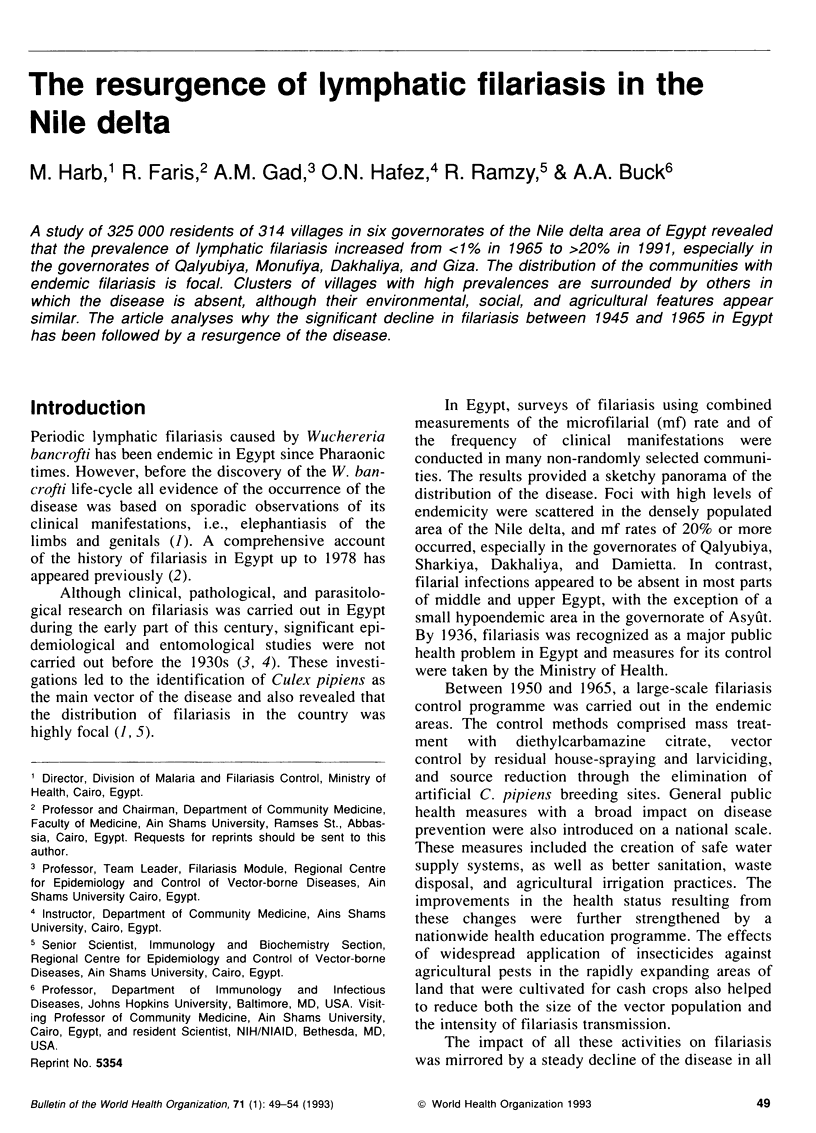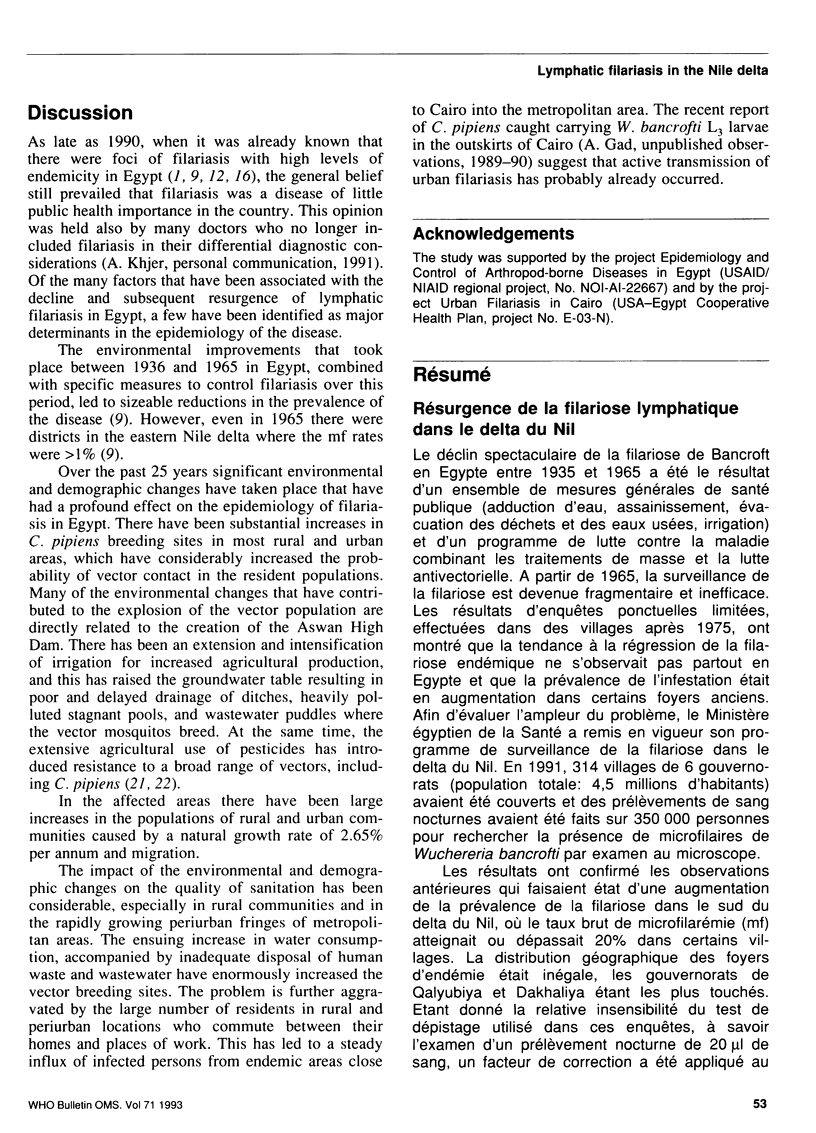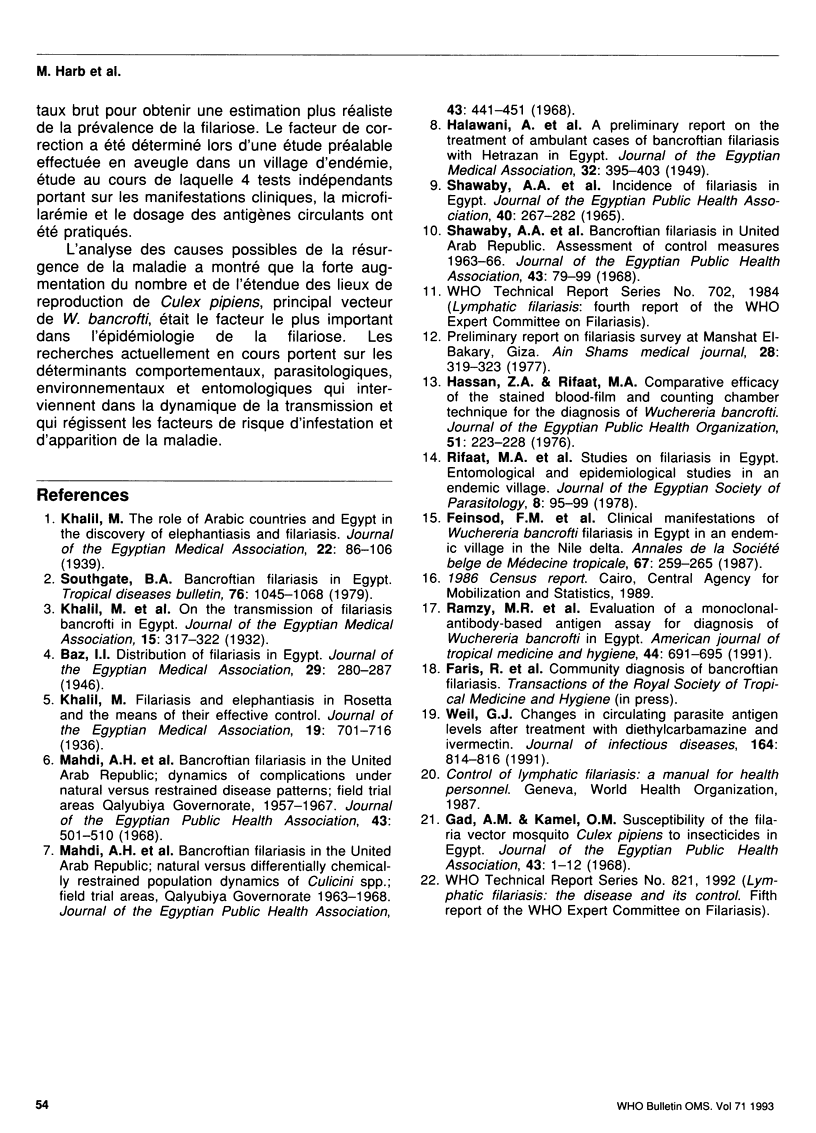Abstract
A study of 325,000 residents of 314 villages in six governorates of the Nile delta area of Egypt revealed that the prevalence of lymphatic filariasis increased from < 1% in 1965 to > 20% in 1991, especially in the governorates of Qalyubiya, Monufiya, Dakhaliya, and Giza. The distribution of the communites with endemic filariasis is focal. Clusters of villages with high prevalences are surrounded by others in which the disease is absent, although their environmental, social, and agricultural features appear similar. The article analyses why the significant decline in filariasis between 1945 and 1965 in Egypt has been followed by a resurgence of the disease.
Full text
PDF





Selected References
These references are in PubMed. This may not be the complete list of references from this article.
- Feinsod F. M., Faris R., Gad A., el Said S., Soliman B. A., Abd-el Azem I. S., Saah A. J. Clinical manifestations of Wuchereria bancrofti filariasis in an endemic village in the Nile Delta. Ann Soc Belg Med Trop. 1987 Sep;67(3):259–265. [PubMed] [Google Scholar]
- Gad A. M., Kamel O. M. Susceptibility of the filaria vector mosquito culex pipiens to insecticides in Egypt, U.A.R. J Egypt Public Health Assoc. 1968;43(1):1–12. [PubMed] [Google Scholar]
- Hassan Z., Rifaat M. A. Comparative efficacy of the stained blood-film and counting-chamber technique for the diagnosis of Wuchereria bancrofti. J Egypt Public Health Assoc. 1976;51(4):223–228. [PubMed] [Google Scholar]
- Ramzy R. M., Gad A. M., Faris R., Weil G. J. Evaluation of a monoclonal-antibody based antigen assay for diagnosis of Wuchereria bancrofti infection in Egypt. Am J Trop Med Hyg. 1991 Jun;44(6):691–695. doi: 10.4269/ajtmh.1991.44.691. [DOI] [PubMed] [Google Scholar]
- Shawarby A. A., Mahdi A. H., Taha A. M., Mahmoud W. A., Arafa A. S., Ezz-el-Arab M. A., Naguib K., Abdel Hafeez M., Mossallam S. S. Bancroftian filariasis in U.A.R. Assessment of control measures 1963-1966. J Egypt Public Health Assoc. 1968;43(2):79–99. [PubMed] [Google Scholar]
- Southgate B. A. Bancroftian filariasis in Egypt. Trop Dis Bull. 1979 Dec;76(12):1045–1068. [PubMed] [Google Scholar]
- Weil G. J., Lammie P. J., Richards F. O., Jr, Eberhard M. L. Changes in circulating parasite antigen levels after treatment of bancroftian filariasis with diethylcarbamazine and ivermectin. J Infect Dis. 1991 Oct;164(4):814–816. doi: 10.1093/infdis/164.4.814. [DOI] [PubMed] [Google Scholar]


